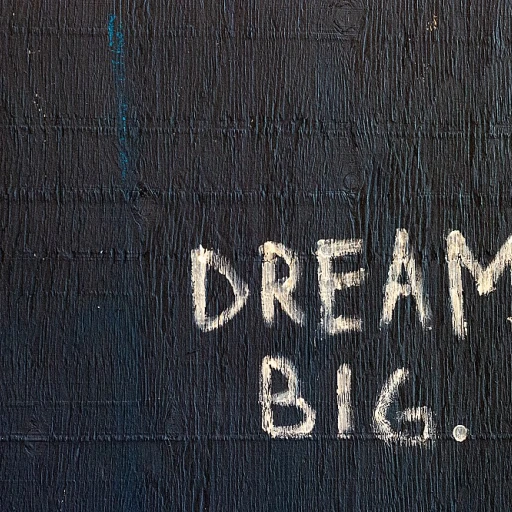The Gradient of Socioeconomic Class: Defining the Spectrum
Understanding Socioeconomic Classes
When businesses consider their strategic approach, understanding the fabric of socioeconomic class is key. What is it that shapes consumer preferences and drives decision-making? The answer often lies in the nuances of societal tiers and purchasing power. In numbers, the coveted middle class, which makes up a significant part of society, wields notable influence. According to the Pew Research Center, in the United States, the middle class consists of over 50% of the country’s total population.
Measuring the Layers
A socioeconomic class is not just a label; it's a tiered structure with metrics that include income levels, educational achievement, and occupational prestige. The U.S. Census Bureau reports that the median household income in 2019 was approximately $68,703. This figure can serve as a benchmark for the middle class but varies depending on geographic location and family size. Meanwhile, educational attainment continues to play a pivotal role, as the American Psychological Association highlights that individuals with higher education levels tend to experience better economic outcomes.
Socioeconomic Status and Opportunities
Delving into socioeconomic status (SES) uncovers disparities in access to resources. SES is a combination of economic, social, and work status perceived by others and oneself, greatly impacting life chances. For instance, children from low SES backgrounds may have less access to quality education which can impact their eventual socioeconomic status. This cycle of socioeconomic influence shapes market demands and the workforce, influencing business strategies across all levels.
The Socioeconomic Lens: Customer Behavior and Market Segmentation
Peering Through the Socioeconomic Lens: Navigating Customer Patterns
The vibrant mosaic of social classes in America presents a dynamic challenge for businesses: understanding how socioeconomic status (SES) shapes consumer behaviors and preferences. Comprehending this impactful force not only enhances market segmentation strategies but also fine-tunes the approach to customer engagement and product development.
Deciphering Socioeconomic Signals in Consumer Spending
Digging into the data, it becomes clear that income and education, key components of SES, significantly influence spending habits. According to the U.S. Census Bureau, median household income levels delineate consumer potential and purchasing power. A recent study noted that the middle class, often characterized by stable household incomes and educational attainment, tends to prioritize spending on children's education and health care, suggesting long-term investment thinking.
Mapping Out Market Segmentation by SES
An effective market segmentation considers the complexities of SES, using criteria like income, education, and occupational status to delineate consumer groups. The American Psychological Association notes that understanding these facets allows companies to craft tailored messages that resonate with each distinct segment, whether it's promoting luxury goods to the upper class or offering affordable services to those with lower socioeconomic status.
Case studies, such as how a major retailer adjusted their product offerings to cater to the working class by providing cost-effective essentials, embody the importance of socioeconomic insights in strategic planning. These real-world examples highlight the crucial role of consumer demographics in crafting business strategies.
Heightening Brand Relevance Through Socioeconomic Understanding
Brands that resonate with their target audience's socioeconomic realities can forge deeper connections and loyalty, as suggested by the European Journal of Marketing. For instance, a high school diploma versus a degree from an esteemed university like Princeton or Yale can create substantially different consumer profiles, with distinctive expectations and media consumption patterns.
Utilizing tools like the World Bank's data on social determinants of health or the American Class Structure metrics, businesses can identify trends and craft strategies that speak directly to the heart of their market's SES.
For a comprehensive guide on leveraging professional networks to decode market segments informed by socioeconomic class, don't hesitate to check our latest insights here.
The Workforce Mosaic: Socioeconomic Status at Play
Unpacking Socioeconomic Diversities Among Employees
Delve into the heart of any thriving business, and you'll find a rich tapestry of individuals hailing from a broad spectrum of socioeconomic backgrounds. These hidden variables of social class and socioeconomic status (SES) are ingrained in the workforce, weaving an intricate mosaic that influences everything from team dynamics to individual performance.
Consider, for instance, a survey by the American Psychological Association, which reveals the subtle yet significant way SES can manifest in job satisfaction and career progression. Employees from lower socioeconomic backgrounds often face unique challenges, such as limited access to mentorship and professional development opportunities, which can inhibit their social mobility within the corporate structure.
Turn the spotlight to data from the U.S. Census Bureau, and the narrative gains more substance. It reports vast disparities in household income levels, affecting employees’ capabilities to engage in extracurricular professional development. This numeric insight underscores an employee's educational attainment, further influencing their position and growth trajectory within the company.
The Subtle Dance of Socioeconomic Factors and Work Dynamics
The ecosystem of any workplace is subtly manipulated by the invisible hands of economic status and education. A study by Princeton University underscores that individuals from higher SES brackets are more likely to exhibit confidence in negotiation scenarios, which can position them favorably for leadership roles and higher compensation packages.
Yet, this isn't merely about income brackets. It's the richness of diversity that SES brings to the professional arena, catalyzing a blend of perspectives that, when harnessed correctly, can fuel masterful approaches to value and profit.
The Ripple Effect of SES on Corporate Learning
Corporate training platforms are often proclaimed as great equalizers but take a shrewd glance at the reality, and one can spot inequities. Children from lower SES households, as noted in research from the United States Government Printing Office, may enter the workforce with markedly different skill sets compared to their peers from the upper-middle class, thus impacting their adaptability to training programs.
The evolving trends pinpoint a common theme: growing recognition of the immensity that SES plays in the work environment. Engaging examples can be seen in companies that offer subsidized education programs or finance high school diplomas and university degrees for their employees, effectively breaking down barriers and building a more dynamic and skilled workforce.
Socioeconomic Inclusivity: A Corporate Imperative
In conclusion, while it’s easy to wax lyrical about the promise of diversity and inclusion, the real challenge lies in recognizing and addressing the complex web of inequalities that socioeconomic factors introduce. Companies are beginning to understand that the diverse socioeconomic experiences of their employees can serve as a stimulus for innovation and growth when inclusivity is not just a buzzword but an operational imperative.
Bridging the Gap: Access to Education and Corporate Training
Expanding Horizons Through Education and Training Initiatives
The forging of a prosperous business strategy greatly hinges on the caliber of its workforce, a truth that is invariably linked to the educational attainment and corporate training of its employees. Informed companies recognize the disparities in access to education correlated with varying socioeconomic statuses (SES), and they're spearheading initiatives to diminish these gaps effectively.
Recent reports by the U.S. Census Bureau show that individuals from the lower socioeconomic strata are less likely to have completed a high school diploma, let alone pursue higher education. This shortfall translates into a less skilled workforce, hindered social mobility, and a diminished capacity for upward progression within the company ranks.
But there's a flipside. Many organizations are now constructing robust platforms for employee upskilling and reskilling, recognizing that investment in employee growth signals a sure-footed approach to cultivating a competitive edge. Through these programs, individuals from historically marginalized groups are finding new inroads into sectors that were once beyond reach due to systemic educational barriers.
Driving Forward With Richer Learning Platforms
A treasure trove of innovation, the digital age has made e-learning tools more accessible, helping businesses to align development offerings with their employees' schedules. Take for instance, a noteworthy shift revealed in a study by the American Psychological Association, stating that flexible, online corporate training programs have been a critical factor in enabling continuous learning—crucial to adapting to technological advancements and industry shifts.
Structured learning opportunities tailored to the corporate context can dramatically shift the trajectory of those within the working and lower middle classes. Data suggests that ongoing training not only improves job performance but also instills a sense of ownership and belonging among employees, pivotal to fostering a culture of loyalty and high performance.
Cutting Through the Red Tape of Credentialism
Several case studies portray how progressive companies are debunking traditional norms by emphasizing skills over credentials. This trend is paving the way for individuals from lower SES groups who might not have the typical qualifications, but possess the aptitude and adaptability to thrive in demanding roles. By doing so, companies are not just empowering their teams but are also redefining what it means to be 'qualified' in an evolving market landscape.
The social determinants of health, including education, have been underlined by the World Bank as influential factors that contribute to a person's quality of life and, by extension, their work performance. As such, businesses that are engaged in reducing the educational divide are indirectly contributing to improving health equity—a reflection of their commitment to social responsibility.
The Synergy of Education and Opportunity
Ultimately, smart businesses are amplifying their strategic initiatives by acknowledging that socioeconomic diversity within the workforce is a wealth of untapped potential. In many ways, corporate training becomes an incubator for diversity of thought, breeding innovation and resilience. By extending educational resources and training to those from all walks of social strata, forward-thinking companies are bolstering their business imperatives while weaving the social fabric tighter—one educated employee at a time.
As business strategists, while we're deciphering the complexities of market segmentation or untangling the nuances of workforce diversity, it behooves us to remember that education stands as a mighty equalizer. In its essence, it enables individuals to redefine their subjective social class and businesses to broaden the scope of their strategic horizon.
Income and Ethics: Balancing Profit With Social Responsibility
Evaluating Profit Priorities with a Social Conscience
In the quest to maximize shareholder value, companies often lock horns with the ideals of social responsibility, particularly when it comes to socioeconomic class considerations. Recent studies suggest that a staggering 70% of consumers believe companies have a social obligation to improve the socioeconomic conditions of the communities they serve. This raises a pivotal question: How can businesses balance the scales between income generation and ethical operations?
Corporate Social Responsibility: A Bottom Line Booster?
Corporate Social Responsibility (CSR) initiatives are no longer just feel-good policies; they have evolved into strategic tools. A robust CSR program can enhance a brand's image, drive consumer loyalty, and even attract top talent. Research indicates that companies acclaimed for high CSR practices witness a 31.9% decrease in employee turnover. This narrative shifts the focus from purely financial metrics to a broader canvas where financial performance meshes with social impact.
Listening to the Voice of Disparity
The dialogue around income discrepancies and ethical practices isn't a mere whisper; it's a growing clamor for change. The American Psychological Association underlines the mental health stresses linked to low socioeconomic status (SES), echoing the need for businesses to consider the broader effects of their employment and wage practices. Paying a living wage, providing healthcare benefits, and fostering inclusive growth are more than moral choices; they are strategic decisions that can lead to healthier, more productive workforces.
Taking the Lead in Addressing Socioeconomic Barriers
Savvy businesses are realizing the strategic advantage of serving lower-income consumer segments. The World Bank points out that by increasing access to products and services for those of lower socioeconomic status, companies can tap into new markets and drive innovation. This approach not only fosters economic equality but can potentially open up burgeoning markets hungry for affordable, accessible solutions.
Transparency: The New Currency of Trust
In the age of information, transparency reigns supreme. Consumers and investors demand higher levels of disclosure from companies about their operations vis-à-vis societal impacts. Reports by the U.S. Census Bureau are pivotal in providing reliable data about income levels across regions, enabling businesses to tailor strategies towards upliftment while driving home a transparent, trust-worthy image.
Engaging Across the Echelons of Socioeconomic Strata
Clubs, societies, and organizations often reflect the socioeconomic strata of our society, yet their influencing power cannot be underestimated. Engaging with community leaders and volunteering initiatives can provide valuable insights into the unique needs of various social classes. Moreover, businesses can leverage such platforms to implement community-driven strategies that align with their corporate ethos, delivering both social and economic dividends.
Socioeconomic Status as a Catalyst for Innovation
Unlocking Opportunities Through SES-Inclusive Innovation
Innovation thrives at the crossroads of diverse perspectives and experiences. Firms that leverage socioeconomic status (SES) as a springboard for innovation often witness a surge in creative solutions that resonate across a broad spectrum of markets. According to a Yale University Press publication, companies acknowledging the diverse needs and challenges of differing social classes are better positioned to craft groundbreaking products and services.
The Data-Driven Approach to SES-Rooted Innovation
Delving into data reveals compelling insights. A report from the American Psychological Association suggests companies that harness customer and employee SES data are more adept at identifying underserved niches. Educational attainment and household income, as measured by the U.S. Census Bureau, serve as pivotal reference points in tailoring offerings that bridge economic gaps.
Catalyzing Change with Socioeconomic Intelligence
Industry leaders recognize the importance of embedding socioeconomic intelligence into their strategic matrix. Cambridge University Press highlights case studies where businesses have recalibrated their approach, focusing on innovation that serves not just the upper class but also encompasses solutions for those in the low SES brackets, engaging with the subtleties of social determinants of health to inform product design.
The Ripple Effect of SES-Responsive Innovation
Social mobility isn't just a matter of policy but a potential competitive edge for businesses. Initiatives that improve access to innovative technologies and services among children and adults in lower socioeconomic classes can foster loyalty and drive social change. For instance, providing low-income families with access to health-improving technology can lead not only to enhanced health equity but also cultivate a new consumer base.
Best Practices: Business Cases Demonstrating SES-Aware Innovation
Success stories abound. From tech companies developing affordable connectivity solutions to healthcare firms rethinking health care delivery for the working class, the trajectory of SES-sensitive innovation is inspiring. These ventures often experience a significant uptick in brand perception and market share while contributing to a more equitable society.
Insights from the Thought Leaders
Expert voices from the American Psychological Association and the World Bank assert the strategic importance of understanding societal structures and their interplay with business. Influential thinkers like Michael Porter have long argued that social and economic progress is not just a byproduct but a legitimate aim of corporate innovation. This ethos, when adopted, aligns the spirit of enterprise with the broader objectives of societal advancement.
Examining Health Equity: The Corporate Role
Corporate Empowerment in Advancing Health Equity
As pillars of the community and influential actors in the economic landscape, corporations have a unique foothold in addressing disparities within health equity. The U.S. Census Bureau reveals that individuals in the lower socioeconomic status (SES) brackets have reduced access to health care. This challenge is exacerbated by low educational attainment and minimal household income, resulting in a perpetuation of the vicious cycle that affects socioeconomic class and health outcomes.
The Role of Data in Health Intervention Strategies
Recent research, like that conducted by the American Psychological Association, sheds light on the direct correlation between socioeconomic factors and health. By analyzing data, corporations can identify regions with high concentrations of low SES families, providing targeted health interventions. For instance, a rise in preventative care can be tied to better corporate health policies and programs, especially in areas where the median household income falls below the national threshold.
Case Studies in Corporate Health Advocacy
Case studies from entities such as the World Bank demonstrate that when corporations invest in the health of their communities, there are positive ripple effects. For example, companies offering health insurance and wellness programs have seen an uptick in productivity and employee morale. Such initiatives are a testament to the capacity of corporate America to bridge gaps in health equity.
Understanding Socioeconomic Barriers to Health
Factors like income, education, and social class create barriers that limit access to healthcare. The Cambridge University Press touches on this in their discussions about social determinants of health, stating how critical it is to address these fundamental disparities. As corporate strategies evolve, acknowledging the layers of SES that influence health is crucial for developing comprehensive wellness solutions.
Trends and Innovations in Corporate Health Responsibility
It's a growing trend among corporations to integrate social determinants of health into their strategic planning. This includes leveraging the connection between a robust workforce and social supports that mitigate against low SES. As noted in studies like those from the American Psychological Association, by offering services such as mental health support and financial advising, companies are pioneering innovative routes towards societal well-being.
Strategic Alliances for Healthier Communities
Collaboration stands out as a strategic move with potential for significant impact. The Princeton University suggests partnerships between corporations and public sectors can lead to stable health care environments, particularly for the low-income brackets. By aligning with healthcare organizations, businesses can contribute to a shared goal of improving community health, leading to a stronger, more productive society.
Metrics of Success: Beyond the Bottom Line
In closing, the measure of success in the corporate sphere is undergoing a paradigm shift, with health equity becoming a critical part of the equation. The World Bank and American Psychological Association both advocate for comprehensive analytics as a valuable tool, tracking progress beyond fiscal prosperity to encompass the wellbeing of the workforce and society at large. This metric reflects an acknowledgement of the interplay between health and socioeconomic class, and the role businesses must play in nurturing the two.
The Class Ceiling: Social Mobility and Corporate Strategy
Breaking Barriers in Social Mobility
Social mobility represents the dynamic locomotion within the socioeconomic scaffolding of society. It's the profound, yet often contested ability of individuals to move beyond the confines of their birth status, propelled through education, income ascendancy, and career advancements. Corporate strategies infused with an understanding of social mobility can lead companies to foster a more versatile and resilient workforce. However, a closer look at the socio-economic data exposes a tough reality; higher education and lucrative professions remain disproportionately accessible to those from more affluent backgrounds. The Princeton University suggests that the likelihood of a child from a low-income family climbing the economic ladder is substantially less than one born into wealth, hinting at the inherent challenges of upward social mobility.
Corporate Strategies Cultivating Equitable Opportunities
While companies are not solely responsible for shattering the class ceiling, they are uniquely positioned to implement strategies that promote socioeconomic diversity. It's essential to reference studies like those from the American Psychological Association indicating that workforce diversity is not just an ethical imperative but also a strategic advantage. Organizations acknowledging this have begun unveiling talent recruitment and retention programs targeting a broader socio-economic pool. They recognize that in harnessing talent from a wide array of backgrounds they are not only bridging social divides but also injecting fresh perspectives and innovation into their enterprises.
Metrics and Measures for Socioeconomic Inclusivity
Metrics play a crucial role in ensuring social mobility within corporate strategies. Figures like median household income and educational attainment from the U.S. Census Bureau serve as critical indicators of socioeconomic status. Beyond data points, there's a move towards nuanced measures of social class that consider the interplay between income, education, and subjective indicators. Reports from the Cornell University Press reiterate the importance of these multi-faceted approaches in understanding the subtleties of social class membership, enabling companies to formulate strategies that accurately address underlying socioeconomic barriers.
Economic Ecosystems and the Role of Businesses
Contemporary discussions on socioeconomic class often center on the broader economic ecosystems and how businesses operate within them. One may consider Europe's vertical social mobility frameworks or Canada's health equity policies as benchmarks for America's corporate approaches. Inferentially, the notion of social classes influences corporate geo-strategic decisions. Companies can be both products of and contributors to the socioeconomic fabric of the United States, with data suggesting that intentional corporate strategies can positively affect social mobility within the American class structure. Furthermore, publications like those from Yale University Press explore the diverse experiences of the working, middle, and upper classes, offering case studies on the symbiotic relationship between social mobility and corporate strategy.














